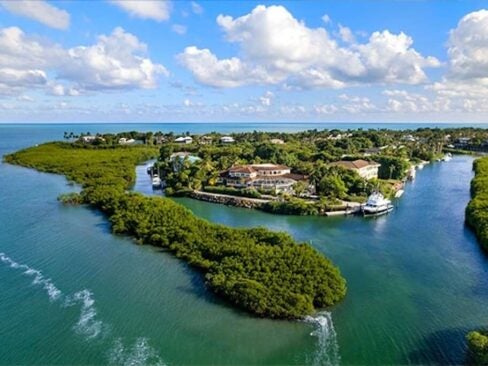Spain’s cultural history stretches back far longer than any history book. Indeed, culture on the Iberian Peninsula started over 65,000 years ago with the elaborate painting of cave walls. In more recent times, many cities have, at one period of time or another, been ruled by Roman, Christian, Muslim and Jewish communities. The result is a mixing pot of stunning architecture spread over a number of different cities, 15 of which have earned World Heritage status. Here, we take you on a quick tour of all of them.
Alcalá de Henares

Alcalá de Henares / ©M.Peinado, Flickr
Nestled in the outskirts of Madrid, Alcalá de Henares is best known as the home to one of Spain’s best universities. The town, which is naturally rich in student culture, is also full of monumental heritage and offers a glimpse of Castillan life during the Spanish Golden Age (1492 – 1681). This period of flourishing art and literature is best summed up with the life and work of Miguel de Cervantes, who was born in Alcalá de Henares and is widely considered to be the greatest writer in the Spanish language.
Ávila
Protected by well-preserved ancient city walls, Ávila offers a true glimpse into Spanish life in the Middle Ages. The town’s past wealth – both financially and culturally – can be seen through a large number of Renaissance palaces. Ávila also boasts a large number of religious buildings – a legacy of Saint Teresa of Jesus who was born here. It is also a hot spot for gourmands with many coming to experience local dishes such as the Ávila veal cutlet and yemas, a dessert of sugared egg yolks dedicated to Saint Teresa.
Baeza
Move south into the Andalusian region to visit Baeza, awarded Unesco World Heritage status due to the large proportion of Renaissance architecture. Tourists regularly visit Baeza as part of the popular Renaissance and Nazarite Routes, coming to see the wonderful examples of ornate stone buildings and staying for the wonderful olive oil that is produced nearby.
Cáceres
The city of Cáceres dates back to Roman times. It was developed as part of the Vía de la Plata, a Roman road linking Seville with Astorga. The architecture shows off the different stages of its life, from the Arabic walls that surround it to the Renaissance palaces. There is a strong tradition of shepherd dishes within the town and pork dishes dominate the menus of local restaurants.
Cordoba

Cordoba / ©Wingpix, Flickr
Another prime example of the mixing pot of Spanish history, Cordoba is the product of several distinct cultures built over the course of a thousand years. This is perfectly embodied in the city’s Great Mosque-Cathedral, which was the centerpiece of the city under both Islamic and Catholic rule. Although rich in history, Cordoba is also a hub of modern culture and has a thriving nightlife scene.
Cuenca
Positioned on a steep promontory at the meeting of two deep river gorges, Cuenca looks as good from the outside as it does on the inside. The city’s Casas Colgadas (Hanging Houses) – houses with wooden balconies that hang over the sheer cliff-face – are almost mythical in appearance. The winding and narrow cobbled streets are perfect for those who love to wander and a surprisingly rich modern art scene makes it a prime destination for culture vultures.
Ibiza Town
Ibiza Town (Eivissa) is the antithesis to the island’s hedonistic reputation. The townscape is dominated by the castle and cathedral, which are situated in the center of its fortified old quarter. The town has long been a destination for the world’s elite and that can be seen in the whitewashed lanes, which are full of high-end boutiques and fine restaurants.
Mérida
The stunning amphitheater in Mérida is a mark of its Roman past. The city lies in the heart of the Vía de la Plata and was once the capital of Roman Lusitania. The plethora of Roman ruins – the most impressive in the whole of Spain – earned it World Heritage status. Many of the ruins are visible in random spots around town, making it perfect for slow, self-guided walking tours.
Salamanca

Salamanca / ©Gabriel Fdez, Flickr
The city of Salamanca is home to one of the world’s oldest universities. It was founded in 1164 by the king of Léon but records indicate it may have been a designated site of teaching in 1094, which would make it older than Oxford. As well as being an institute for excellence, it is also of tremendous historical significance. The university’s buildings are beautiful examples of Renaissance architecture.
San Cristóbal de la Laguna
Away from the mainland and out into the Atlantic lies the beautiful island of Tenerife. The architecture is, understandably, far different but its history is just as rich. That is underlined in the colonial city of San Cristóbal de la Laguna. First founded in the late 15th century, is becoming the center of the island’s rapid development and contains several of the island’s major religious buildings, including the Cathedral.
Santiago de Compostela

Santiago de Compostela / ©Jocelyn Erskine-Kellie, Flickr
Known for being the final stop on the beautiful Camino de Santiago pilgrimage trail, Santiago de Compostela is a fitting finale for weary hikers. Although the city welcomes millions of tourists every year, there is a strong local culture with the vast majority of restaurants offering traditional Galician fare of fresh seafood and local wine. There are endless bars and taverns selling gorgeous food for unbelievably cheap prices, making this the perfect alternative to the foodie hub of San Sebastián.
Segovia
Known primarily for the stunning aqueduct that has survived since the 2nd century, Segovia offers visitors an array of Roman artifacts. But there is far more to Segovia than its Roman past, including the incredible Alcázar fortress, which is believed to have inspired Walt Disney’s vision of Snow White’s castle. Unfortunately, what stands today is a reconstruction of the original, which burnt down in 1862. The city’s cathedral, which dominates the skyline, also stands as a beautiful example of Gothic architecture.
Tarragona
Situated on the Mediterranean coast, Tarragona was once a thriving Roman settlement and is second only to Mérida in its archaeological importance. Its seaside amphitheater has captured the imagination of millions on Instagram but is only truly appreciated in person. Gothic architecture flourishes in its medieval center, which is littered with narrow lanes and contains a towering cathedral at its heart.
Toledo
Toledo, once the capital of the Spanish Empire, is the optimum destination for both a culinary and cultural experiences. Gourmands can gorge on the excellent wine and olive oil of La Mancha. Historically a city of three cultures, Toledo’s twisting medieval streets accommodate mosques, synagogues, and churches. The city is crammed with original artwork by Europe’s great masters, from Velázquez to Rubens and most famously El Greco.
Úbeda
Úbeda is the capital of Spain’s Renaissance period. Everything from luxury hotels to tapas bars are situated in colorful buildings typical of the era. Tourists come here to wander around the many different parts of the city, including the Moorish town of Ubbadat, which was founded in the 9th century and was once one of the most important towns in Al-Andalus.










